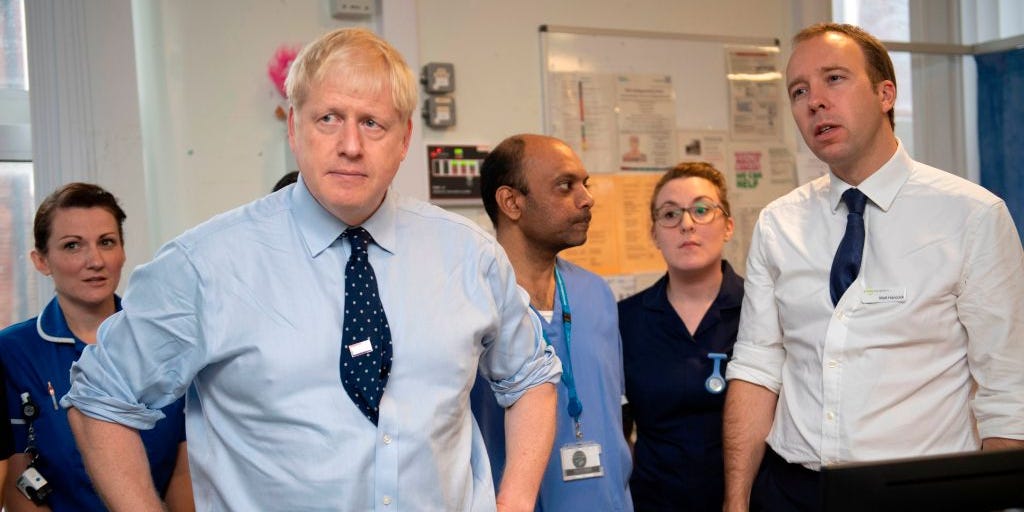The Government’s strategy of introducing restrictive measures, both local and national, whenever positive tests start to rise is based on three critical assumptions:
- Once positive tests start to rise, they will inevitably increase to catastrophic levels without intervention
- Big increases in positive tests will eventually lead to high numbers of hospitalisations and deaths
- The restrictions will be effective in cutting infections
Given the astronomical costs of the restrictions, it is hard to see how they can be justified if any one of these three assumptions does not hold. The evidence so far suggests that, in fact, none of them may be valid.
1. Once positive tests start to rise, they will inevitably increase to catastrophic levels without intervention
There is sufficient evidence both from the UK and other countries that, for whatever reason, increases in positive tests do not inevitably spiral out of control without restrictive lockdown measures.
In the first place, infections and deaths have often followed similar patterns in many countries despite radically different approaches to interventions. Within Europe, the obvious comparison is Sweden, with its light lockdown measures, and Belgium, France and the UK who all imposed much tighter restrictions. In April, it was predicted that cases in Sweden would spiral out of control, leading to hundreds of thousands of deaths. In fact, the pattern of deaths was virtually identical in Sweden to the UK.
Recent experience in the US is also illustrative. Florida, Texas, Georgia, Arizona and California all saw big rises in cases during July. Each of the 5 states followed very different policy paths in response. Georgia introduced few additional restrictions, California took a very aggressive approach, whilst Arizona, Florida and Texas were somewhere in between. Yet all those states have seen similar decreases in infection rates since the end of July.
In Spain, some weeks ahead of the UK in the cycle, cases and hospitalisations are now decreasing even in the absence of significant lockdown measures.
Closer to home, indicators such as NHS Triage data, the Zoe Symptom App and ONS Infection Survey all suggest that the increase in new cases was already slowing down. Importantly, this slow-down occurred before Chris Whitty and Patrick Vallance showed their now-notorious graphic indicating that we could see 50,000 cases per day in the UK by the middle of October.
In the past week or so, new positive tests have increased again due a high number of university-related outbreaks. Even with these outbreaks, there seems to be little prospect of us getting anywhere close to 50,000 per day in two weeks’ time.
2. Big increases in positive tests will eventually lead to high numbers of hospitalisations and deaths
New positive tests in England rose almost fivefold between early July and mid-September. Hospitalisations and deaths have increased but there is no indication that they are following a similar trend to what we saw in March. Even now, six weeks after the surge in positive tests at the end of August, PHE figures suggest deaths are averaging just under 40 per day in England compared to nearly 900 at the peak in April.
There are also stark regional differences. For example, positive tests in the South West increased tenfold since their low point in early July, yet the whole region is still averaging less than one death per day while there are currently a total of just four Covid-19 patients on ventilation.
3. The restrictions will be effective in cutting infections
The Government has taken something of a shot-gun approach to its restrictions: the 10pm curfew, rule of 6, local bans on meeting up with any other household, and compulsory masks. But we rarely see evidence that these arbitrary measures are effective. Indeed, some restrictions may well be counter-productive.
Who would have predicted that turfing customers out of every pub and restaurant at the same time would have led to mass gatherings in the street, followed by drinking sessions at home (where social distancing guidelines are much less likely to be followed)? Pretty much everyone except our Government it would seem. But worse is that the curfew was imposed despite a complete lack of evidence as to its effectiveness.
And what about forbidding people in much of the North from meeting even one other person outdoors in their own gardens? One thing we know is that transmission of the virus is much less likely outdoors, and no evidence has been offered in relation to this restriction either.
Many of these measures have already been in place for weeks in much of the North West so we already have data on their effectiveness. Far from limiting the rise in new cases, those areas have seen some of the biggest increases in new positive cases in the country.
At what point will the Government consider the evidence of its own interventions? At this point, the whole strategy seems founded on assumptions that are at best unproven, and at worst directly contradicted by the facts. It is not too late for Boris Johnson to change tack and to focus on how we can learn to live with the virus while continuing to take sensible, evidence-based precautions.
David Paton is Professor of Industrial Economics at Nottingham University Business School. He Tweets as @CricketWyvern











Join the discussion
Join like minded readers that support our journalism by becoming a paid subscriber
To join the discussion in the comments, become a paid subscriber.
Join like minded readers that support our journalism, read unlimited articles and enjoy other subscriber-only benefits.
Subscribe